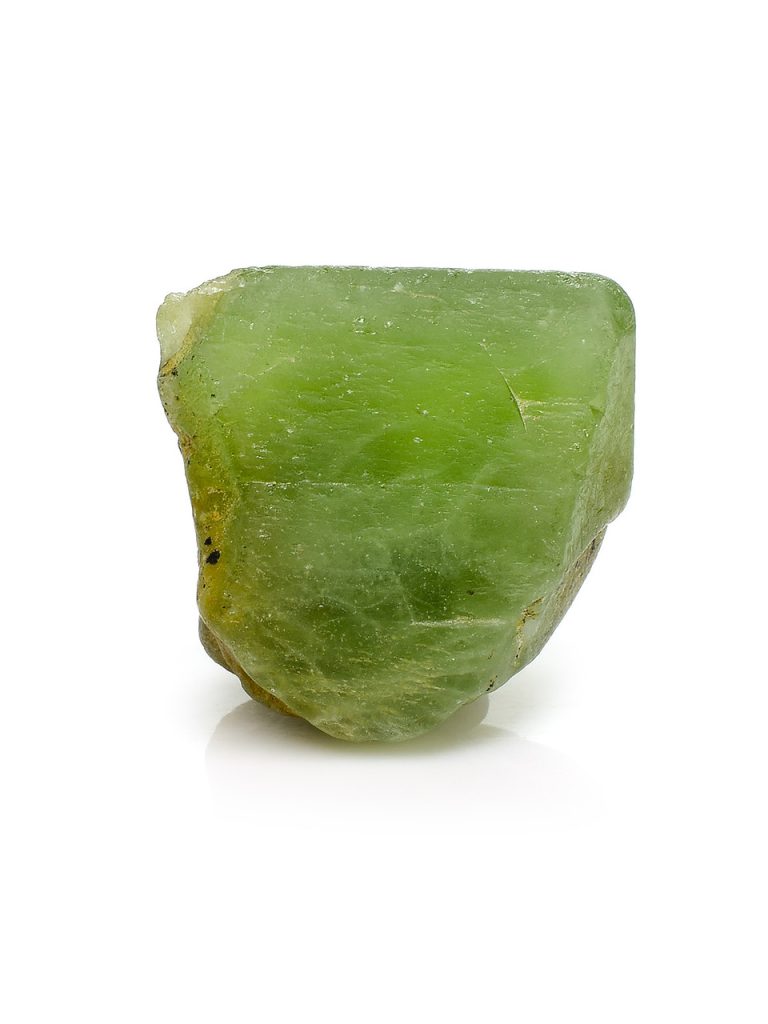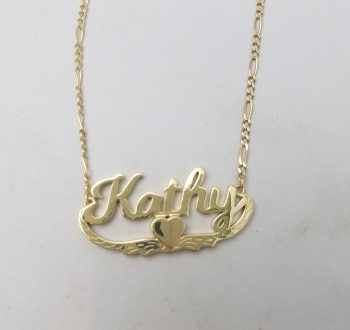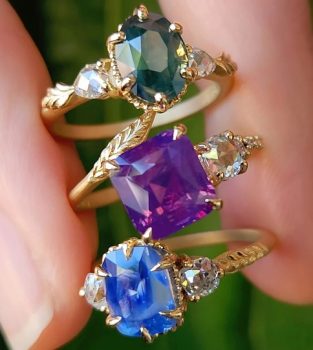Peridot Jewelry is the prefect gift for a jewelry lover born in August. Not only is it a beautiful stone. It is also relatively durable and more affordable than other green stones like emerald, tsavorite, or tourmaline. Peridot is an ancient stone long revered for its color and health benefits. Another aspect of peridot that jewelry afficionados love is the fact that it is a very clean and clear stone. The inclusions typically found in peridot, though not always, are very small and rarely seen by the naked eye. In this post we will discuss peridot and the jewelry you will find it in.
What Is A Peridot?
A peridot is a gemstone that belongs to the olivine mineral group. It is known for its vibrant green color, ranging from pale yellowish-green to deep olive green. Peridots have a hardness of 6.5 to 7 on the Mohs scale, making them relatively durable and suitable for everyday wear. They are found in volcanic rocks and are commonly mined in countries such as Egypt, Myanmar, and the United States. Peridots are often associated with positive energy, abundance, and good luck, making them a popular choice for jewelry and spiritual purposes.
Peridots have been valued for centuries for their unique color and properties. In ancient times, they were believed to ward off evil spirits and protect the wearer from nightmares. Today, peridots are still highly regarded for their beauty and symbolism. They are often used in various types of jewelry, including rings, earrings, necklaces, and bracelets. Peridots are also used in spiritual practices, such as crystal healing and meditation, to promote emotional well-being and balance.
When purchasing a peridot, it is important to consider factors such as color, clarity, and cut. The most desirable peridots have a vibrant green color with no visible inclusions. The cut of the stone can also greatly affect its brilliance and overall appearance. Peridots are typically faceted to maximize their sparkle and enhance their natural beauty. Whether you are drawn to peridots for their aesthetic appeal or their metaphysical properties, they are sure to add a touch of elegance and positivity to any jewelry collection.
History Of Peridot and Peridot Jewelry
Peridot, also known as “the gem of the sun,” has a rich and fascinating history. Believed to have been first discovered over 3,500 years ago on the island of Zabargad in the Red Sea, this gemstone has been prized for its vibrant green color and mystical properties. Ancient Egyptians were particularly fond of peridot, using it to adorn their jewelry and even burying it with their pharaohs. In fact, Cleopatra herself was said to have been a fan of peridot, often wearing it as a symbol of her power and influence. Today, peridot continues to captivate people with its beauty and allure, making it a cherished gemstone in the world of jewelry.
In the Middle Ages, peridot continued to be highly valued and was often used in religious jewelry. It was believed to have healing properties and was thought to protect against evil spirits. During this time, peridot jewelry was also popular among European royalty and nobility.
In more recent history, peridot gained popularity again in the 20th century. It became a popular choice for Art Nouveau and Art Deco jewelry due to its vibrant green color and versatility. Today, peridot jewelry remains a beloved choice for those seeking a unique and eye-catching gemstone. Whether it’s a delicate peridot necklace or a stunning peridot ring, this gemstone continues to captivate jewelry enthusiasts around the world.
Peridot Range of Colors
The Peridot gemstone is known for its wide range of colors. From light green to olive green, Peridot offers a variety of shades that can suit different preferences. Its color is influenced by the presence of iron in its composition. The lighter shades of Peridot are often associated with a fresh and vibrant look, while the darker shades exude a sense of sophistication. Whether you prefer a subtle touch of green or a bold statement piece, the Peridot range of colors has something for everyone.
In addition to its diverse color palette, Peridot also offers various benefits. It is believed to have healing properties that can help alleviate stress and promote relaxation. The vibrant green color of Peridot is often associated with growth and renewal, making it a popular choice for those seeking positive energy. Furthermore, Peridot is a durable gemstone that can withstand everyday wear, making it suitable for both casual and formal occasions.
When it comes to jewelry, the Peridot range of colors opens up a world of possibilities. From delicate earrings to statement necklaces, there are countless designs that showcase the beauty of this gemstone. Whether you prefer a minimalist style or a more elaborate piece, Peridot can add a touch of elegance to any outfit. Its versatility and unique color variations make it a popular choice among jewelry enthusiasts.
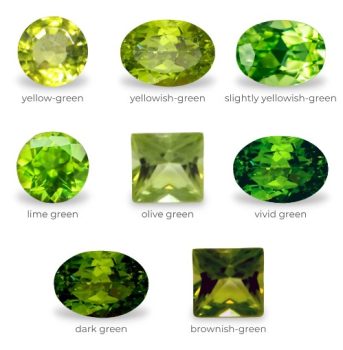
Peridot Physical Properties
Peridot belongs to the olivine mineral group and is composed of magnesium, iron, and silicate. One of the key physical properties of peridot is its hardness, which ranges from 6.5 to 7 on the Mohs scale. This makes it a relatively durable gemstone that can withstand everyday wear. Additionally, peridot has a vitreous luster, giving it a shiny and reflective appearance. Its refractive index is around 1.65 to 1.69, which contributes to its brilliance when properly cut and polished.
Peridot also has a relatively high specific gravity, ranging from 3.27 to 3.37. This density contributes to its weight and overall feel when held in the hand. Another notable physical property of peridot is its cleavage. It exhibits poor cleavage in two directions, meaning it can easily break along certain planes. However, peridot is generally quite tough and resistant to fractures, making it suitable for use in various types of jewelry.
Natural vs Lab Grown Peridot
Peridot can be found both in nature and created in a lab. Natural peridot is formed deep within the Earth’s mantle and is brought to the surface through volcanic activity. Lab-grown peridot, on the other hand, is created in a controlled environment using advanced technology.
When it comes to choosing between natural and lab-grown peridot, there are a few factors to consider. Natural peridot is prized for its rarity and unique characteristics. Each natural peridot gemstone is one-of-a-kind, with its own individual flaws and inclusions. On the other hand, lab-grown peridot is more affordable and readily available. It is also free from any natural impurities, making it more consistent in terms of color and clarity.
In terms of quality, both natural and lab-grown peridot can be equally stunning. Natural peridot often has a slightly higher value due to its rarity, but lab-grown peridot can be just as beautiful and durable. Ultimately, the choice between natural and lab-grown peridot comes down to personal preference and budget. Whether you choose a natural or lab-grown peridot, you can be sure to enjoy its vibrant green beauty for years to come.
Peridot Treatments
Gemstone treatments refer to the various processes used to enhance the appearance and durability of colored gemstones. These treatments are commonly applied to improve the color, clarity, and overall quality of the gemstone. One of the most common treatments is heat treatment, which involves heating the peridot to a specific temperature to enhance its color. Another treatment method is irradiation, where the gemstone is exposed to radiation to alter its color. Additionally, peridot may undergo oil or resin treatments to fill in any surface fractures or enhance its luster. These treatments are widely accepted in the gemstone industry and are used to enhance the natural beauty of peridot gemstones. However, heat is the only treatment you will really see used. The rest aren’t worth doing to the stone because of it’s low cost.
Beliefs About Peridot
Beliefs about peridot vary across different cultures and time periods. In ancient Egypt, peridot was considered the “gem of the sun” and was associated with fertility and abundance. In medieval Europe, peridot was believed to have healing properties and was used to treat various ailments such as liver problems and asthma. Today, peridot is often associated with positive energy, growth, and renewal. It is believed to bring good luck, wealth, and success to its wearer. Whether you believe in the metaphysical properties of peridot or simply appreciate its beauty, this gemstone continues to captivate and inspire.
Why Peridot Jewelry Is In Fashion
Peridot jewelry is currently in fashion for several reasons. Firstly, peridot is a vibrant green gemstone that adds a pop of color to any outfit. Its bright hue is perfect for the summer season and can instantly elevate a simple ensemble. Additionally, peridot is a relatively affordable gemstone compared to other precious stones, making it accessible to a wider range of consumers. Its affordability allows fashion enthusiasts to experiment with different styles and designs without breaking the bank. Lastly, peridot is believed to have various positive metaphysical properties. It is said to bring good luck, promote harmony, and enhance creativity. These qualities make peridot jewelry not only fashionable but also meaningful. So, whether you’re looking to add a touch of color to your wardrobe or embrace the positive energy associated with peridot, this gemstone is definitely worth considering for your jewelry collection.
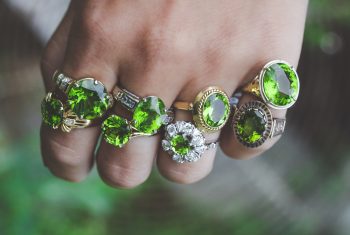
Notable Peridot Stones From the Past & Present
Peridot has a rich history filled with notable stones. One such stone is the “Evening Emerald,” a 46.19 carat peridot that is housed in the Smithsonian National Museum of Natural History. This gem, discovered in Pakistan in the 1950s, showcases the beauty and allure of peridot.
Another remarkable peridot stone is the “Hawaiian Goddess Pele’s Tears.” These small, olive-green gems are believed to be the tears of the Hawaiian volcano goddess, Pele. Found on the beaches of Hawaii, these peridots are treasured for their cultural significance and unique origin.
In the present, peridot continues to captivate with its stunning beauty. The “Arizona Peridot” is a prime example, known for its intense green color and exceptional clarity. Mined in the San Carlos Apache Indian Reservation, these peridots are highly sought after by collectors and jewelry enthusiasts alike.
Peridot stones from the past and present showcase the enduring appeal of this gem. Whether it’s the historical significance of the “Evening Emerald,” the cultural importance of “Hawaiian Goddess Pele’s Tears,” or the contemporary allure of the “Arizona Peridot,” each stone tells a fascinating story and adds to the timeless beauty of peridot.
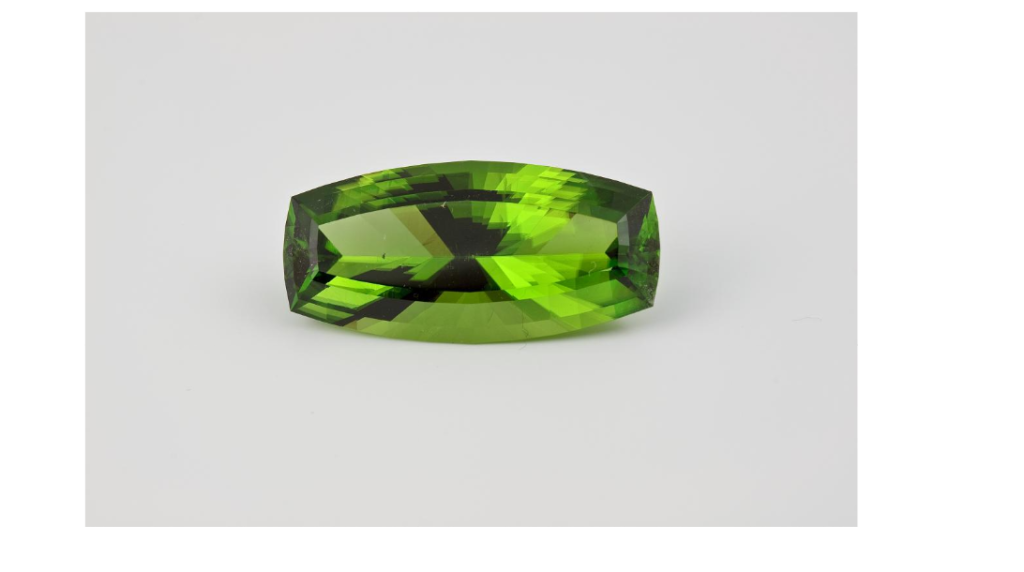
How To Care For Peridot Jewelry
Peridot jewelry requires proper care to maintain its beauty and longevity. Here are some essential tips to help you care for your peridot jewelry.
First, it is important to protect your peridot from harsh chemicals and extreme temperatures. Avoid exposing your jewelry to household cleaners, perfumes, and hairsprays as these can cause damage to the gemstone. Additionally, extreme heat or sudden temperature changes can cause the peridot to crack or fade in color. It is advisable to remove your peridot before engaging in activities such as swimming or gardening to prevent any potential damage.
Second, regular cleaning is crucial to keep your peridot jewelry looking its best. To clean your peridot jewelry, use a soft cloth or a gentle brush with warm soapy water. Gently scrub the gemstone to remove any dirt or residue. Rinse thoroughly and pat dry with a soft cloth. Avoid using ultrasonic cleaners or steamers as they may damage the peridot. It is recommended to clean your peridot jewelry every few months to maintain its shine and brilliance.
Lastly, proper storage is essential to prevent scratches and damage to your peridot jewelry. When not wearing your jewelry, store it in a soft pouch or a separate compartment in your jewelry box to avoid contact with other pieces. It is also advisable to avoid storing your peridot jewelry in direct sunlight as prolonged exposure can cause the gemstone to fade in color.
By following these simple care tips, you can ensure that your peridot jewelry remains beautiful and radiant for years to come. Remember to handle your jewelry with care and seek professional assistance if you notice any signs of damage. Enjoy wearing your peridot jewelry and let its vibrant green color shine bright.
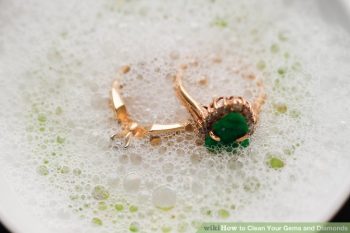
What Does Peridot Cost?
The cost of peridot can vary depending on several factors. One of the main factors that affects the price of peridot is its size. Larger peridot stones are generally more expensive than smaller ones. Additionally, the quality of the peridot can also impact its cost. Peridot stones that have a deep green color and minimal inclusions are considered to be of higher quality and therefore, more expensive. Finally, the origin of the peridot can also play a role in its cost. Peridot stones that are sourced from certain locations, such as Arizona or Pakistan, are often more valuable. Overall, the cost of peridot can range from relatively affordable to quite expensive, depending on these various factors. This means anywhere from 20 a carat for lower end stones to hundred of dollars per carat for larger stones.
Let Us Create Your Peridot Jewelry
At Valeria Custom Jewelry, our name says what we do. And custom jewelry made to order is all we do. Consequently, each stone that goes in our custom jewelry creations is hand picked for that piece. That means you will have access to any stone that is available at that moment. This is unlike a chain jewelry store, where you will be limited to what they have in stock. We are also able to have stones custom cut into any shape you want.
You can view our portfolio of custom engagement rings or custom pendants to look for ideas. Or you can contact us with your own idea for custom jewelry. You know what they (we) say. Once you go custom, you never go back. To the mall!
